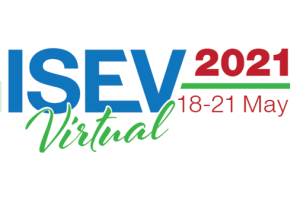In May, researchers from all over the world dealing with extracellular vesicles met at the ISEV Annual Meeting virtual event.
ISEV is the International Society for Extracellular Vesicles, i.e. the scientific community that studies extracellular vesicles (EVs).
EVs are nano-scaled particles released by almost all body cells with crucial involvement in the pathogenesis of multiple human disorders, including brain disorders.
EVs have the phisiological function of mediating INTERCELLULAR COMMUNICATION, bringing proteins lipids, and nucleic acids from one organ to another using the blood flow as well as all types of body fluids. Actually, EVs were found in blood, urine, milk, saliva, tears and cerebrospinal fluids.
- From a diagnostic point of view, EVs are particularly interesting to study brain diseases as they are loaded with the same markers as the cell of origin, but they can be isolated from accessible biofluids like blood. Moreover, sick cells like tumor cells usually produce modified or unfolded molecules that can be found in EVs, too.
- From a therapeutic point of view, EVs from stem cells or artificially loaded EVs can serve as thrapeutics, with considerable advantages in terms of biocompatibility and immunogenicity.
Similarly to the engineered nanovectors designed by the #NEVERMIND Consortium, engineered EVs can transport drugs and bioactive molecules to regenerate an injured tissue.
Unfortunately, their nanoscaled dimensions and their considerable heterogeneity have partially limited and slowed EV researchers in their work, but considerable efforts are spent to overcome current limitations in the isolation, detection and characterization method.
The LABION team is working on the development and optimization of a highthroughput biosensor based on SPRi technology to identify novel early biomarkers for Alzheimer’s disease.





